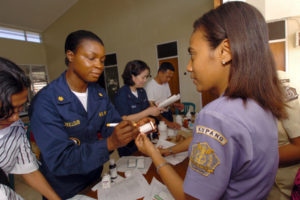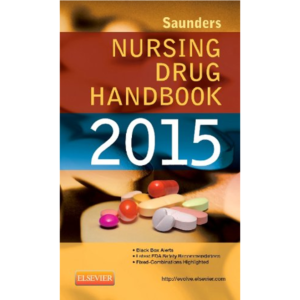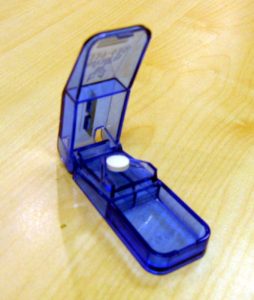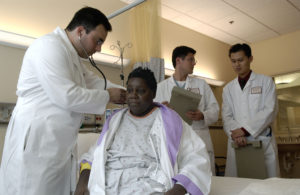Preventing medication errors is essential in ensuring patients’ safety. A simple flaw in the administration of medication can put a patient’s life in danger. Fortunately, you only need one trait to reduce the risk of medication errors at work – attentiveness.
With your full attention and presence of mind, you can reduce the likelihood of making mistakes.
To help you prevent medication errors at your workplace, here are some of the most effective tips for nurses:
1. Identify the Right Patient
Identifying the right patient is the most important key in preventing medication errors. You can do this by simply asking the patient’s full name and date of birth to make sure the information given matches your medication card.
Never stop asking for the patient’s name for each medication you will give even if you do it several times in a shift. Most medication errors happen when nurses think they know their patients’ medications well that they don’t bother verifying the patient’s name first.
For patients with problems stating their names, you can just look at their name band to check if you are dealing with the right patient. Some hospitals even use a barcode scanning system where you can just scan the patient’s arm band with a small device to verify their names.
2. Ensure the right drug
When carrying out doctor’s orders, ensure that you are dealing with the right drug. There are lots of drugs with similar brand names like clonidine and klonopin, celebrex and cerebryx and many more.
To ensure that you are dealing with the right drug, it will be best to use both the generic and brand name of the medication ordered. Be careful as well with drug packaging as some medicines come in deceptively similar packaging or canisters.
3. Check with your drug handbook
Whenever you are not sure with the drug you will administer, don’t hesitate to double check with your drug handbook. A drug handbook is a wealth of important information about different drugs like adverse reactions, drug incompatibilities, precautions and many more.
If you have time, develop the habit of looking up a drug’s information before giving it to the patient. Over time, you will memorize important information for different drugs before administration.
Also read : 8 Best Medical Dictionaries for Nurses
4. Maintain clear communication
Sometimes, ordered medications are lost in communication among doctors, nurses and pharmacists. To avoid miscommunication, there are simple things you can do in carrying out doctor’s orders for new medications.
When receiving orders through phone, write down the instructions and repeat everything before hanging up. Avoid using improper abbreviations and write the medication’s name legibly.
5. Have a double-check buddy for high alert drugs
High alert medication are so potent that a slight variation in dosage given will directly affect the patient’s vital signs. For this reason, it is important to have someone double check your high alert medications before you administer them to your patient.
High alert drugs include heparin, dopamine, dobutamine, nicardipine, digoxin and many more.
Also read : Nursing Mnemonics and Tricks (Pharmacology)
6. Ask patient about any drug allergies before giving new medications
To avoid unnecessary adverse drug reactions, always ask the patient about any known drug allergies before giving new medications. There are some occasions where patients forget to state their drug allergies upon initial history taking.
Sometimes, healthcare workers also forget to record the known drug allergies of the patient in their chart. For these reasons, it is essential to verify and ask your patients about their known drug allergies when starting a new medication.
7. Learn as much as you can about medications
Make reading a habit. Whenever you encounter an unfamiliar drug, take the drug literature paper and study it.
You can also learn a lot from reading labels. If you have a smart phone, try to install a drug index app as it will be handy whenever you want to look up for a drug quickly.
Also read: Top 10 Online Drug Guide for Nurses Online
8. Clarify newly ordered medication if it doesn’t seem right
There is nothing wrong in double checking with your fellow health workers. If you think a newly ordered medication will do more harm to the patient than its intended therapeutic effect, clarify it with the doctor.
Sometimes, nurses are more sensitive in overseeing drug incompatibilities in the patient’s treatment regimen. It takes a simple clarification to avoid adverse drug reactions.
9. Create medication labels properly
It is not advisable to put drugs into another container but if you must do it, label the new container properly. Indicate the generic and brand name of the drug as well as dosage and expiry date.
When creating this new medication label make sure that it is readable. The font should be simple and narrow. It is also more convenient if you will peel the old label from the previous canister and stick it to the new canister.
10. Be careful in crushing and cutting up pills
Some tablets have extended release coatings. These medications are usually antihypertensive and hypoglycemic drugs. Be careful in crushing or cutting them up as these drugs will produce quick potent effects when taken without the extended-release coating.
If you must give the drug through a nasogastric tube, clarify with the doctor first as you should not crush an extended-release tablet.
11. Relate the patient’s case in carrying out new medication orders
This is practical whenever you can’t read a poorly written medication order or if you think there has been a typographical error in the new order. Relating the patient’s case in carrying out new medication orders is helpful in making clarifications.
For example, a nurse is having trouble reading the newly ordered medication for a 14 year old boy with seizures. The written order reads like “prednisone” but considering the case of the patient, the nurse decided to clarify with the doctor if the patient really needs prednisone as part of his maintenance drugs at home.
Upon clarification, the ordered medication is actually “primidone”. Considering the patient’s case in carrying out new medication orders saved him from unnecessary adverse drug reactions.
12. Precautions in eardrops and eyedrops
If one of your patients receives eardrops and eye drops simultaneously, you can create a simple marker so you don’t confuse using them interchangeably. Applying a small colored sticker on one side of the container is helpful especially if you have lots of medications to administer in other patients. This is an easy technique in simplifying safety measures in giving medications to your patients.
To avoid medication errors, always keep the patient’s safety in mind while giving their medications. If you are just new in practicing the nursing profession, asking guidance from your senior nurses is also helpful in preventing medication errors. Seasoned nurses know more techniques in reducing the risks of such mistakes so ask for their guidance and advice as you start working in your unit.
About the Author: Je Abarra is a nurse by profession and a freelance writer by passion. She is working as a staff nurse in the pediatric ward of a private city hospital for more than two years. During her free time, she usually writes about her fascinations in health and nursing. She loves to provide tips and fun facts about nursing and healthy living.






























